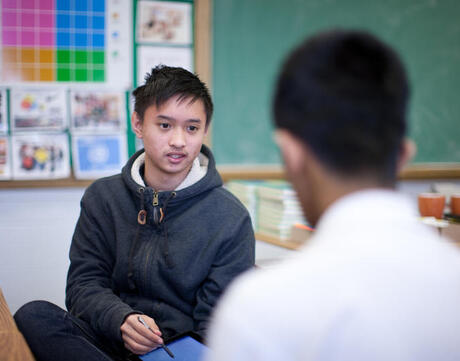
Concentric Circles
At a Glance
Subject
- Advisory
- Civics & Citizenship
- English & Language Arts
- History
- Social Studies
Grade
6–12Overview
What Is a Concentric Circles Discussion?
This discussion strategy invites every student in the class to participate as an active listener and speaker. Students stand in two concentric circles facing one another and respond to a question in a paired discussion. When prompted by the teacher, one of the circles moves to the left or right so each student now faces a new partner, with whom they discuss a new question. This kinesthetic activity works well to debrief a reading or video and mixes up students so that they have the opportunity to share with a wide range of students. Furthermore, because they are speaking with just one other person at a time, reticent students might feel more comfortable sharing their ideas than they would in a group or class discussion.
Lesson Plans
How to Conduct a Concentric Circles Discussion
Unlimited Access to Learning. More Added Every Month.
Facing History & Ourselves is designed for educators who want to help students explore identity, think critically, grow emotionally, act ethically, and participate in civic life. It’s hard work, so we’ve developed some go-to professional learning opportunities to help you along the way.
Exploring ELA Text Selection with Julia Torres
On-Demand

Working for Justice, Equity and Civic Agency in Our Schools: A Conversation with Clint Smith
On-Demand

Centering Student Voices to Build Community and Agency
On-Demand














